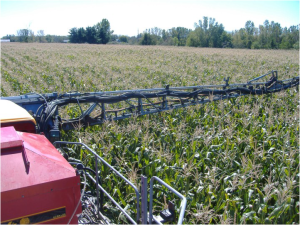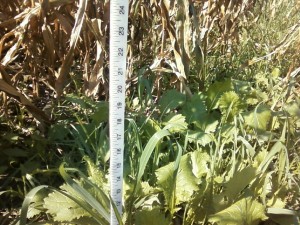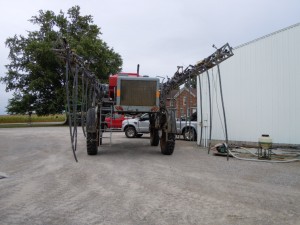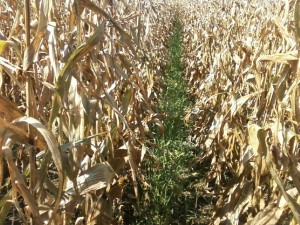Over the past few years farmers and ground applicators have been looking for new and innovative ways to apply cover crops. One of the more successful ways has been with a high-boy or Hagie sprayer/spreader. My friend Craig Simon from NE Indiana had a mixture of Oats and Rye and Turnips applied this way by Andy Ambriole in August 2012.
Craig intends to graze his cover crops as he has done for the past 3 years. Each year Craig has had his best corn and soybeans in the areas where he had cover crops the previous year.


The advantages of using a high-boy type applicator:
- More exact placement of seed than aerial application
- Little if any risk of any drift into neighboring fields
- Faster application than drilling
- Earlier application than drilling
- Cost effective compared to aerial application and drilling
Disadvantages of using a high-boy type applicator:
- Less acres covered in a day compared to aerial application
- Soil conditions must be right to avoid compaction
- Does not incorporate the seed like a drill
While there are few “disadvantages” this practice should increase in popularity over the next few years as more and more acres are covered with cover crops.

